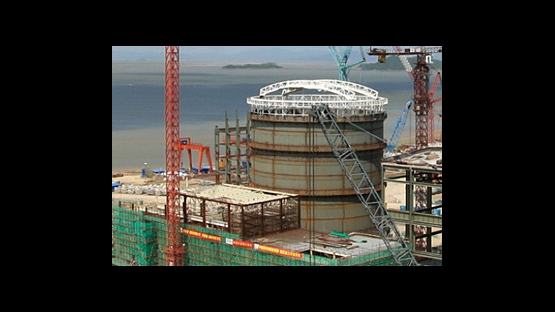In his address to the IAEA's 56th General Conference, IAEA Director General Yukiya Amano said, "When I became Director General three years ago, the talk was of a nuclear renaissance." The March 2011 Fukushima Daiichi nuclear accident raised "fundamental questions about the future of nuclear energy throughout the world," he said, yet, "eighteen months after the accident, it is clear that nuclear energy will remain an important option for many countries." The Director General referred to the IAEA's latest projections for nuclear power generating capacity that "show a steady rise in the number of nuclear power plants in the world in the next 20 years." He noted that developing countries continue to show keen interest in nuclear power.
The IAEA's annually updated high and low projections for the world's nuclear power generating capacity, were released with analysis from the IAEA's energy planning experts during the IAEA's 56th General Conference held in Vienna from 17-21 September 2012.
Continuing growth in nuclear power following the Fukushima Daiichi nuclear accident is expected, however at a rate lower than estimated a year ago. Both the high and low projections predict growth in nuclear power capacity by 2030, by 25 per cent in the low projection and by 100 per cent, i.e. a doubling in generation capacity, in the high projection.
No Reversal
The projections made in 2011 after the accident indicated that it would slow the growth of nuclear power, but not reverse it. The 2012 updates, taking into account developments through April 2012, reinforce this conclusion, but with a greater slowdown in growth.
In the 2012 updated low projection, the world's installed nuclear power capacity grows from 370 gigawatts today to 456 GW(e) in 2030, diminishing by 9 per cent from the level projected last year. In the updated high projection, it grows to 740 GW(e) in 2030, which is an increase that is about 1 per cent less than estimated in 2011. Relative to projections made before the accident, the low projection has been reduced by 16 per cent and a more moderate eight percent in the high projection. (A gigawatt, or GW(e), equals one billion watts of electrical power).
The low projection shows a 10-year delay in the pre-Fukushima anticipated growth, with the capacity that was projected for 2020 before the accident now being projected for 2030.
Centres of Growth
Most of the growth will occur in regions that already have operating nuclear power plants.
Projected growth is strongest in the Far East, which includes China and the Republic of Korea. From 80 GW(e) at the end of 2011, capacity grows to 153 GW(e) in 2030 in the low projection and to 274 GW(e) in the high.
Western Europe shows the biggest difference between the low and high projections. In the low projection, Western Europe's nuclear power capacity drops from 115 GW(e) at the end of 2011 to 70 GW(e) in 2030. In the high projection, nuclear power grows to 126 GW(e).
In North America, the low case projects a small decline, from 114 GW(e) at the end of 2011 to 111 GW(e) in 2030. The high projection projects an increase to 148 GW(e).
Other regions with substantial nuclear power programmes are Eastern Europe, which includes Russia, and the Middle East and South Asia, which includes India and Pakistan. Nuclear power expands in both regions in both the low and high projections - to levels 2-4 GW(e) below those projected before the accident.
Assumptions
The low projection assumes current trends continue with few changes in policies affecting nuclear power. It does not assume that all national targets for nuclear power will be achieved. It is a "conservative but plausible" projection.
The high projection assumes that the current financial and economic crises will be overcome relatively soon and past rates of economic growth and electricity demand will resume, notably in the Far East. It assumes stringent global policies to mitigate climate change.
The low and high projections are developed by experts from around the world who are assembled by the IAEA each spring. They consider all the operating reactors, possible license renewals, planned shutdowns and plausible construction projects foreseen for the next several decades. They build the projections project-by-project by assessing the plausibility of each in light of, first, the low projection's assumptions and, second, the high projection's assumptions.
The projections are made at a regional, rather than national, level. The new low scenario is compatible with a potential decline of the share of nuclear power in Japan's electricity mix.
For more information, see:


